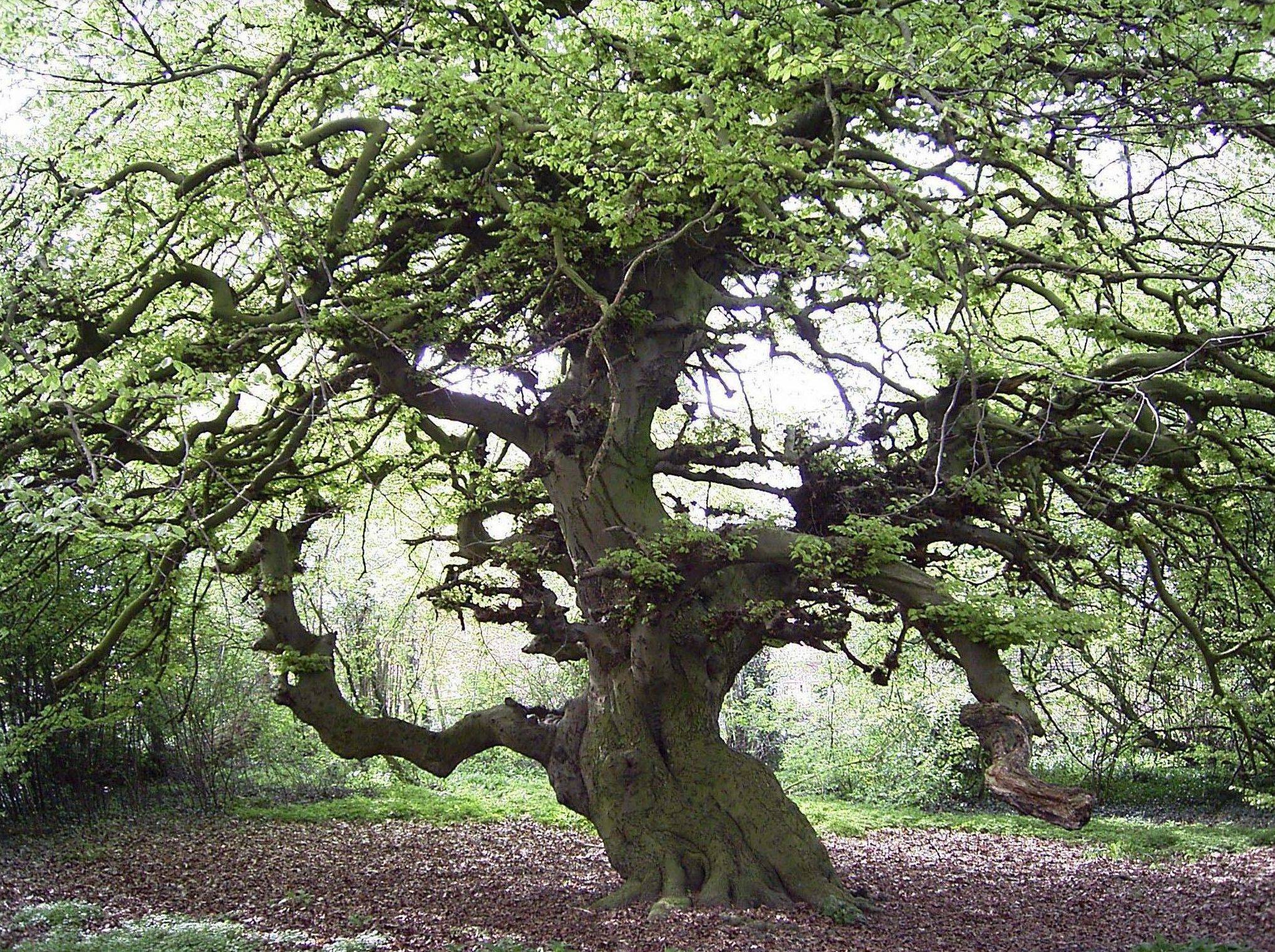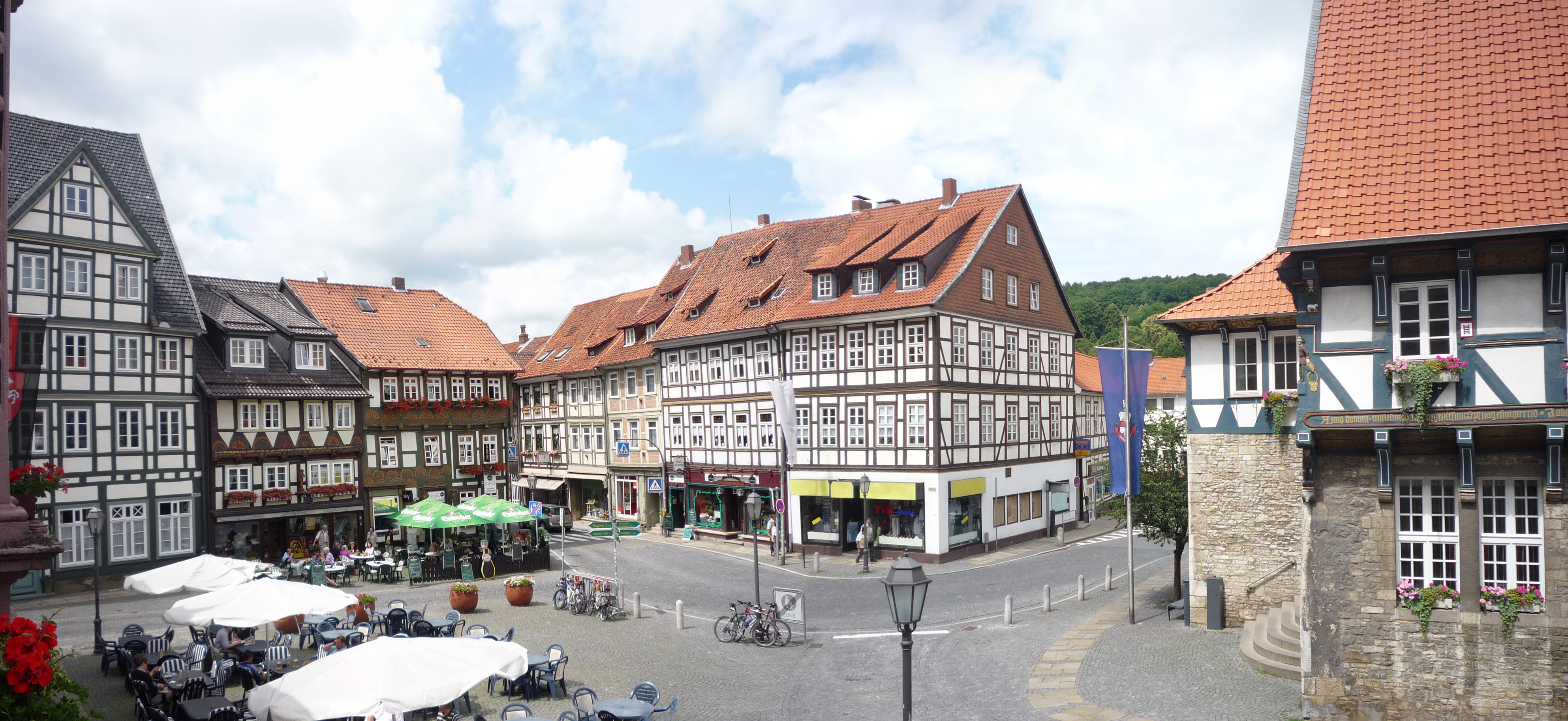|
Dwarf Beech
The dwarf beech, ''Fagus sylvatica'' Tortuosa Group, is a rare cultivar group of the European Beech with fewer than 1500 older specimens in Europe. It is also known as twisted beech or parasol beech. It is a wide-spreading tree with distinctive twisted and contorted branches that are quite pendulous at their ends. With its short and twisted trunk the Dwarf Beech grows more in width than height, only seldom reaching a height of more than 15 metres. It sometimes grows from seed and has formed colonies in Sweden (where it is known as "Vresbok"), Denmark ("Vrange bøge"), Germany ("Süntel-Buchen"), France ("Faux de Verzy") and Italy ("Alberi serpente", nel Monte Pollino). A similar form is the weeping beech (''Fagus sylvatica'' Pendula Group), which has more pendulous branching. Distribution Germany Until the middle of the 19th century, the largest dwarf beech forest in Europe was in the Süntel. The Süntel is a small massif north of Hamelin in Lower Saxony in Germany. ... [...More Info...] [...Related Items...] OR: [Wikipedia] [Google] [Baidu] |
Bad Gandersheim
Bad Gandersheim ( Eastphalian: ''Ganderssen'') is a town in southern Lower Saxony, Germany, located in the district of Northeim. , it had a population of 9,492. Bad Gandersheim has many half-timbered houses and is located on the German Timber-Frame Road (german: Deutsche Fachwerkstraße). The town contains an airport as well. Geography The town of Bad Gandersheim lies between the Leine Uplands, Weser Uplands, and Harz Foreland in the valley of the Gande River, into which its tributary, the Eterna, empties within the town's territory. To the north lies the Heber Ridge. The borough is predominantly hilly. The Harz Mountains begin about east of the town, and to the west is the Leine Graben (german: Leinegraben). Borough divisions The borough of Bad Gandersheim consists of the following subdivisions based on the surrounding villages: History The town dates back to 852, when Gandersheim Abbey, a house of secular canonesses, was created in nearby Brunshausen by Liudolf, ... [...More Info...] [...Related Items...] OR: [Wikipedia] [Google] [Baidu] |
Wesergebirge
The Weser Hills (''Wesergebirge''), also known in German as the ''Weserkette'' ("Weser Chain"),"Ein anderes Bild als die Bergländer der oberen Weser bieten die ''Weserkette'', das ''Wiehengebirge'' und der ''Teutoburger Wald'', see Christian Degn, et al. (ed.) Seydlitz, 1st Part, ''das deutsche Vaterland, wir und die Welt'', 7th ed., Kiel, Hanover, 1954, p. 50 form a low hill chain, up to , in the Weser Uplands in the German states of North Rhine-Westphalia and Lower Saxony. The thickly wooded Weser ridge is one of the northern outliers of the German Central Uplands on the southern edge of the North German Plain and forms part of the TERRA.vita Nature Park in the west and Weser Uplands Schaumburg-Hameln Nature Park in the east. The Weser Hills are widely known because of Schaumburg Castle which stands on the Nesselberg (c. ) in the Schaumburg district of the town of Rinteln, and is the emblem of Schaumburg Land. Geography The Weser Hills cross the counties of Minden-Lübbe ... [...More Info...] [...Related Items...] OR: [Wikipedia] [Google] [Baidu] |
Flora Botanical Garden
The Flora und Botanischer Garten Köln (11.5 hectares) is a municipal formal park and botanical garden located adjacent to Cologne Zoological Garden at Amsterdamer Straße 34, Cologne, North Rhine-Westphalia, Germany. It is open daily without charge. The garden dates to 1863 when a private company was organized to create Flora park (5.5 hectares) as a replacement for the city's older botanical garden near the Cologne Cathedral, which in 1857 was destroyed for construction of the central railway station. This new park was designed by Peter Joseph Lenné in 1864 in a mixed German style, incorporating French Baroque, Italian Renaissance, and English landscape garden elements. In its center is a glass palace (orangery) structure of cast iron and glass patterned upon the Crystal Palace (London) and '' Jardin d'hiver'' (Paris), which served as an exhibition site through the late 19th century, including horticultural exhibitions in 1875 and 1888, and an industrial exhibition in 1889. ... [...More Info...] [...Related Items...] OR: [Wikipedia] [Google] [Baidu] |
Habit (biology)
Habit, equivalent to habitus in some applications in biology, refers variously to aspects of behaviour or structure, as follows: *In zoology (particularly in ethology), habit usually refers to aspects of more or less predictable ''behaviour'', instinctive or otherwise, though it also has broader application. Habitus refers to the characteristic form or morphology of a species. *In botany, habit is the characteristic form in which a given species of plant grows (see plant habit).Jackson, Benjamin, Daydon; A Glossary of Botanic Terms with their Derivation and Accent; Published by Gerald Duckworth & Co. London, 4th ed 1928 Behavior In zoology, ''habit'' (not to be confused with ''habitus'' as described below) usually refers to a specific behavior pattern, either adopted, learned, pathological, innate, or directly related to physiology. For example: * ...the atwas in the ''habit'' of springing upon the oor knockerin order to gain admission... * If these sensitive parrots are kep ... [...More Info...] [...Related Items...] OR: [Wikipedia] [Google] [Baidu] |
Variety (botany)
In botanical nomenclature, variety (abbreviated var.; in la, varietas) is a taxonomic rank below that of species and subspecies, but above that of form. As such, it gets a three-part infraspecific name. It is sometimes recommended that the subspecies rank should be used to recognize geographic distinctiveness, whereas the variety rank is appropriate if the taxon is seen throughout the geographic range of the species. Example The pincushion cactus, ''Escobaria vivipara'' (Nutt.) Buxb., is a wide-ranging variable species occurring from Canada to Mexico, and found throughout New Mexico below about . Nine varieties have been described. Where the varieties of the pincushion cactus meet, they intergrade. The variety ''Escobaria vivipara'' var. ''arizonica'' is from Arizona, while ''Escobaria vivipara'' var. ''neo-mexicana'' is from New Mexico. See also '' Capsicum annuum var. glabriusculum'' Definitions The term is defined in different ways by different authors. However, the I ... [...More Info...] [...Related Items...] OR: [Wikipedia] [Google] [Baidu] |
Herrenhausen Gardens
The Herrenhausen Gardens (german: Herrenhäuser Gärten, ) of Herrenhausen Palace, located in Herrenhausen, an urban district of Lower Saxony's capital of Hanover are made up of the Great Garden (), the Berggarten, the Georgengarten and the Welfengarten. The gardens are a heritage of the Kings of Hanover. The Great Garden has always been one of the most distinguished Baroque gardens of Europe while the Berggarten has been transformed over the years from a simple vegetable garden into a large botanical garden with its own attractions. Both the Georgengarten and the Welfengarten have been made in the style of English gardens, and both are considered popular recreation areas for the residents of Hannover. The history of the gardens spans several centuries, and they remain a popular attraction to this day. The Great Garden The Great Garden owes much of its aesthetics to Sophia of Hanover, consort of the Elector of Hanover and herself heiress to the British throne, wh ... [...More Info...] [...Related Items...] OR: [Wikipedia] [Google] [Baidu] |
Bochum
Bochum ( , also , ; wep, Baukem) is a city in North Rhine-Westphalia. With a population of 364,920 (2016), is the sixth largest city (after Cologne, Düsseldorf, Dortmund, Essen and Duisburg) of the most populous Germany, German federal state of North Rhine-Westphalia and the List of cities in Germany by population, 16th largest city of Germany. On the Ruhr Heights (''Ruhrhöhen'') hill chain, between the rivers Ruhr (river), Ruhr to the south and Emscher to the north (tributaries of the Rhine), it is the second largest city of Westphalia after Dortmund, and the fourth largest city of the Ruhr after Dortmund, Essen and Duisburg. It lies at the centre of the Ruhr, Germany's largest urban area, in the Rhine-Ruhr, Rhine-Ruhr Metropolitan Region, and belongs to the Arnsberg (region), region of Arnsberg. Bochum is the sixth largest and one of the southernmost cities in the Low German dialect area. There are nine institutions of higher education in the city, most notably the Ruhr Unive ... [...More Info...] [...Related Items...] OR: [Wikipedia] [Google] [Baidu] |
Auetal
Auetal is a municipality in the district of Schaumburg, in Lower Saxony, Germany. It is situated approximately 10 km south of Stadthagen, and 22 km east of Minden. Its seat is in the village Rehren. The coat of arms features an image of the "Tilly-Buche", (1739-1994) a dwarf beech The dwarf beech, ''Fagus sylvatica'' Tortuosa Group, is a rare cultivar group of the European Beech with fewer than 1500 older specimens in Europe. It is also known as twisted beech or parasol beech. It is a wide-spreading tree with distinctive ... tree which existed in the area. References External links Auetal community Schaumburg {{Schaumburg-geo-stub ... [...More Info...] [...Related Items...] OR: [Wikipedia] [Google] [Baidu] |
Theodolite
A theodolite () is a precision optical instrument for measuring angles between designated visible points in the horizontal and vertical planes. The traditional use has been for land surveying, but it is also used extensively for building and infrastructure construction, and some specialized applications such as meteorology and rocket launching. It consists of a moveable telescope mounted so it can rotate around horizontal and vertical axes and provide angular readouts. These indicate the orientation of the telescope, and are used to relate the first point sighted through the telescope to subsequent sightings of other points from the same theodolite position. These angles can be measured with accuracies down to microradians or seconds of arc. From these readings a plan can be drawn, or objects can be positioned in accordance with an existing plan. The modern theodolite has evolved into what is known as a total station where angles and distances are measured electronically, and ... [...More Info...] [...Related Items...] OR: [Wikipedia] [Google] [Baidu] |





